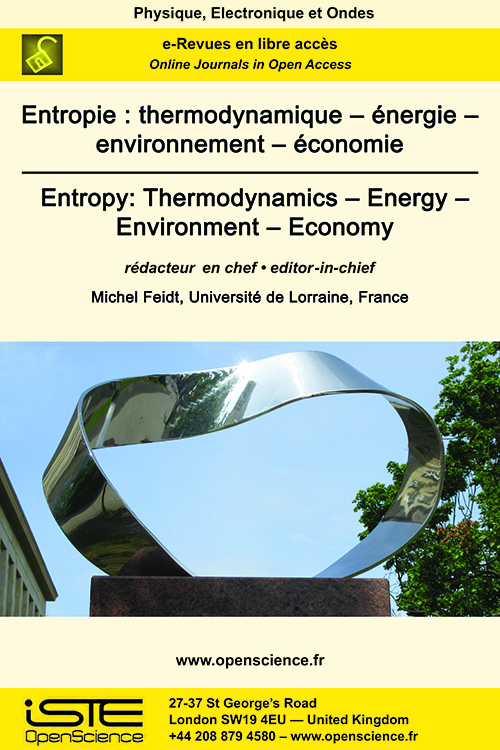

Physics > Home > Entropy: Thermodynamics – Energy – Environment – Economy > Issue
La Société Française de Thermique est une société savante qui a pour vocation le développement et le rayonnement des Sciences Thermiques en elles-mêmes et dans leurs applications...
This paper study a heat transfer correlation for asymetrically heated turbulent channel flows characterized by high temperature levels. The correlation aims to estimate heat transfers in gas pressurized solar receiver of concentrated solar power tower. A wall heat fluxes sensitivity study to flow parameters is performed. The propagation of measurement uncertainties is quantified as a function of the axial location in the solar receiver and, then, as a function of the fluid-to-wall temperature ratio.
This study concerns the natural convection in a dielectric fluid confined in a rectangular cavity subjected to a temperature gradient and a high frequency alternating electric field. The thermoelectric coupling induces dielectrophoretic force with effects similar to those of Archimedean buoyancy in generating thermal convection. We conducted a linear stability analysis to find the critical modes. Beyond the threshold, numerical simulation was performed to analyze the flow when increasing the electric voltage and we highlighted the heat transfer enhancement by the electric buoyancy. We have introduced a new control parameter, encompassing the Archimedean buoyancy and the electric buoyancy, to generalize the thermoelectric convection problem.
The design of a Stirling machine requires the understanding of the processes that govern their operation to predict the optimum operating parameters of the machine. The modified simple model using the geometrical parameters of the FEMTO-ST engine model is applied in this paper to investigate the trend of losses with respect to operating frequency and charging pressure. The variation of pressure drops across the regenerator and heat exchangers have been investigated as functions of operating frequency and charging pressure in order to predict the extent of fluid friction losses. The share of different power and heat losses as well as their effects on cooling performance have been evaluated at the different operating frequencies and charging pressures. The share of fluid friction loss and loss due to regenerator imperfection increase with rotational speed and charging pressure.

2025
Volume 25- 6
Issue 12024
Volume 24- 5
Special issue LILA 22023
Volume 23- 4
Issue 12022
Volume 22- 3
Issue 12021
Volume 21- 2
Special issue2020
Volume 20- 1
Issue 1